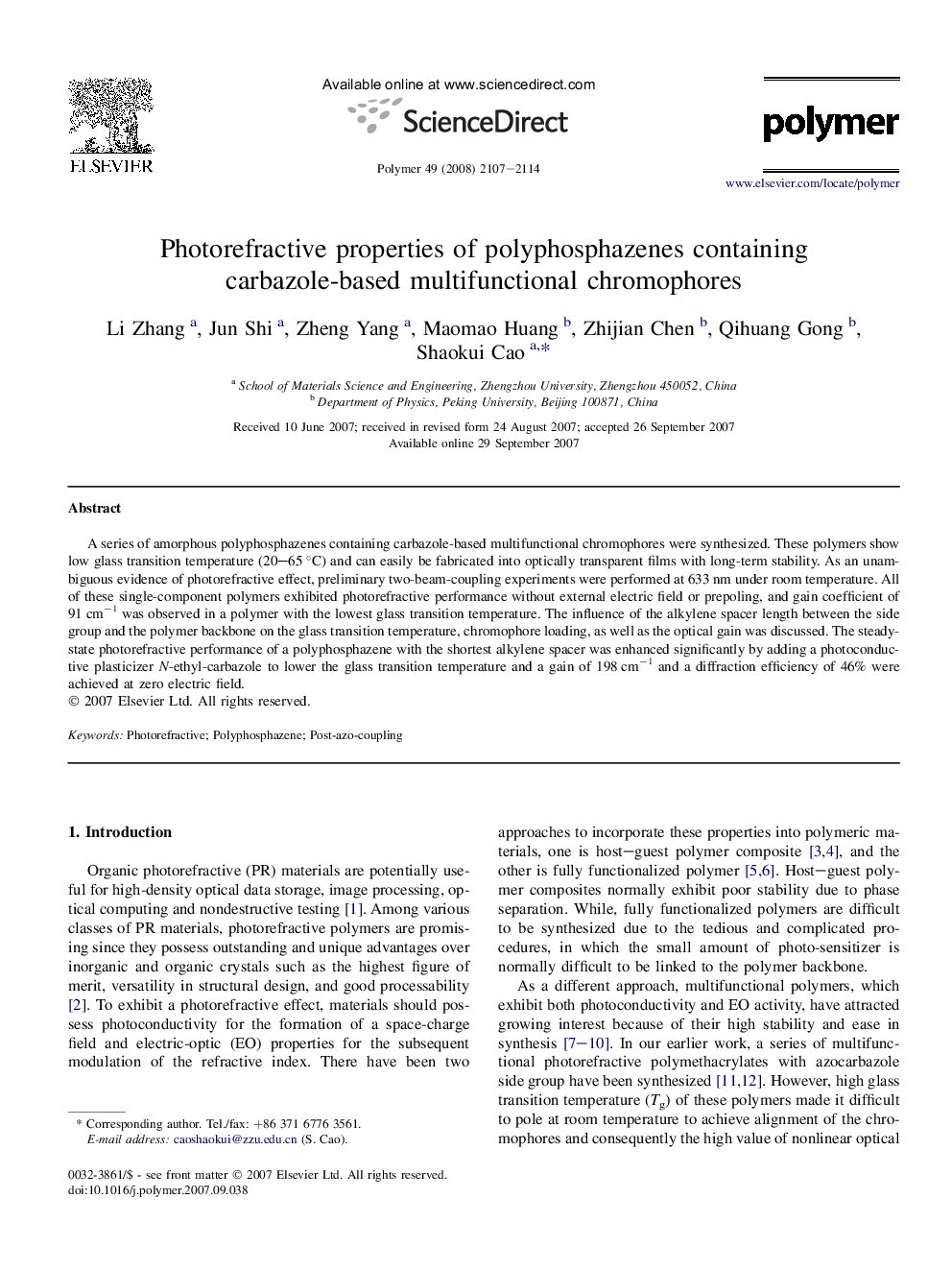| Article ID | Journal | Published Year | Pages | File Type |
|---|---|---|---|---|
| 5187658 | Polymer | 2008 | 8 Pages |
A series of amorphous polyphosphazenes containing carbazole-based multifunctional chromophores were synthesized. These polymers show low glass transition temperature (20-65 °C) and can easily be fabricated into optically transparent films with long-term stability. As an unambiguous evidence of photorefractive effect, preliminary two-beam-coupling experiments were performed at 633 nm under room temperature. All of these single-component polymers exhibited photorefractive performance without external electric field or prepoling, and gain coefficient of 91 cmâ1 was observed in a polymer with the lowest glass transition temperature. The influence of the alkylene spacer length between the side group and the polymer backbone on the glass transition temperature, chromophore loading, as well as the optical gain was discussed. The steady-state photorefractive performance of a polyphosphazene with the shortest alkylene spacer was enhanced significantly by adding a photoconductive plasticizer N-ethyl-carbazole to lower the glass transition temperature and a gain of 198 cmâ1 and a diffraction efficiency of 46% were achieved at zero electric field.
